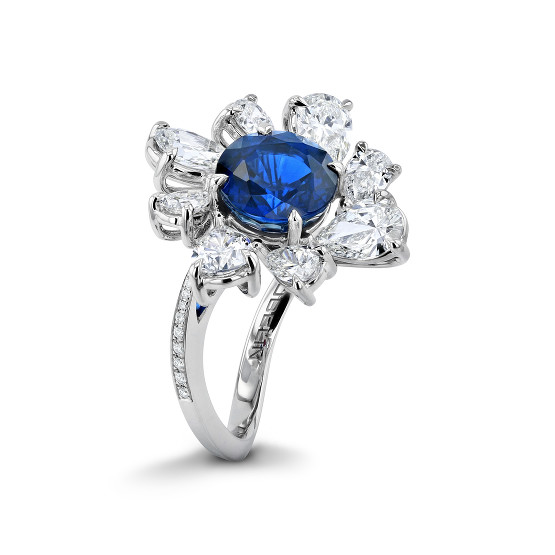Discover
the Origin
The island state of Madagascar lies only 400 kilometres away from the African coast. On it, humans have resided for only the last two millennia and its vegetation and wildlife have developed in a singular way apart from the evolution on the continent the island once broke away from. Over the last few decades, the gemstone industry on this erstwhile French colony has grown strongly and today, magnificent sapphires, rubies and other precious stones are unearthed from the ground of this beautiful island.
The gem market of
Madagascar
Until the 1990ies, Madagascan gemstones, especially sapphires, were rarely heard of. In the years since the discovery of curious coloured stones and subsequent gold-rush like development of mining all over the country, Madagascar had become the world's leading source of sapphires. The boom was so great that it was felt heavily at places as far away as Tanzania where gemstone traders left the area to buy the new material found on the island in the Indian Ocean, leaving the Tanzanian gemstone trade with dramatically less demand for their product.
Gemstones of
Madagascar
Mining in Madagascar is traditionally done on a small scale, mostly by artisanal means. In the last few years however, large scale, corporate mining has developed a stronger presence in Madagascar as well. Other than sapphires, precious stones like rubies, emeralds, aquamarines, tourmalines, amethysts and many more can be found in often remote locations. Towns of tens of thousands of people emerge within a few years around newly discovered deposits and are inhabited until the deposit runs dry. Afterwards, many of the miners relocate to find other deposits on their hunt for the precious gifts from mother earth.
the sapphire capital
Ilakaka
Although there are many other regions where gemstones are found in Madagascar, none are so intimately linked with sapphires as Ilakaka, the sapphire capital of Madagascar and one of the most important sapphire mining areas in the world. Before the discovery of sapphires, this spot of land was nothing more than a few houses near a road, occupied by about forty residents. Today, Ilakaka is a bustling town with a population of more than 60'000 people. The area is particularly well known for its pink sapphires but beautiful blue, purple, yellow and orange sapphires are unearthed as well.
Madagascar's
Natural Beauty
Having been separated from the African mainland for about 88 million years, the flora and fauna on Madagascar has had the possibility to evolve independent from most other species on earth. This has led to approximately ninety percent of plant and animal species that reside on this beautiful island being endemic, meaning that they do not exist anywhere else in the world.











